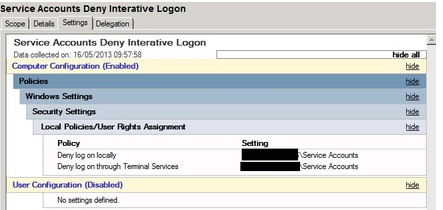

- #HER INTERACTIVE LOGIN PASSWORD#
- #HER INTERACTIVE LOGIN PROFESSIONAL#
- #HER INTERACTIVE LOGIN WINDOWS#
#HER INTERACTIVE LOGIN WINDOWS#
Local user account and group membership information is used to manage access to local resources.Ī network logon grants a user permission to access Windows resources on the local computer in addition to any resources on networked computers as defined by the credential's access token. The computer can have network access, but it is not required. The SAM protects and manages user and group information in the form of security accounts stored in the local computer registry.

A local logon requires that the user has a user account in the Security Accounts Manager (SAM) on the local computer.

Locally, when the user has direct physical access to the computer, or when the computer is part of a network of computers.Ī local logon grants a user permission to access Windows resources on the local computer. Users can perform an interactive logon to a computer in either of two ways: This mandatory logon process cannot be turned off for users in a domain. The process confirms the user's identification to the security database on the user's local computer or to an Active Directory domain.
#HER INTERACTIVE LOGIN PASSWORD#
Windows Client Authentication Architecture Local and domain logonĬredentials that the user presents for a domain logon contain all the elements necessary for a local logon, such as account name and password or certificate, and Active Directory domain information. The following diagram shows the interactive logon elements and logon process. Users can perform an interactive logon by using a local user account or a domain account to log on to a computer. The logon process begins either when a user enters credentials in the credentials entry dialog box, or when the user inserts a smart card into the smart card reader, or when the user interacts with a biometric device. This topic describes the following scenarios: To understand how authentication works, see Windows Authentication Concepts.

Sign-in account and credential information is managed by the application or service, and optionally can be stored locally in Credential Locker. The sign-in process is similar to the logon process, in that a valid account and correct credentials are required, but logon information is stored in the Security Account Manager (SAM) database on the local computer and in Active Directory where applicable. In addition, applications and services can require users to sign in to access those resources that are offered by the application or service. The contents of this topic apply to versions of Windows designated in the Applies to list at the beginning of this topic. After a user is authenticated, authorization and access control technologies implement the second phase of protecting resources: determining if the authenticated user is authorized to access a resource. Windows-based computers secure resources by implementing the logon process, in which users are authenticated. The Windows operating systems require all users to log on to the computer with a valid account to access local and network resources.
#HER INTERACTIVE LOGIN PROFESSIONAL#
This reference topic for the IT professional summarizes common Windows logon and sign-in scenarios. Applies to: Windows Server 2022, Windows Server 2019, Windows Server 2016


 0 kommentar(er)
0 kommentar(er)
